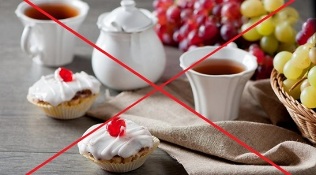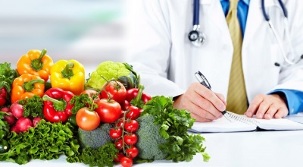
Gout was scientifically proven in 1865. Thomas Sendegum described the disease in his book, A Treatise on Gout, which described the signs, symptoms, and attacks of the disease that he had experienced for 30 years.
In the time of Hippocrates, it was called the "disease of kings. "Reasons are considered: excessive and varied consumption of food and alcohol.
What is gout
Gout is a pathology associated with the deposition of salts in the joints and kidneys, and is characterized by severe pain in these areas. The development of the disease leads to recurrent and increasing seizures, which lead to the formation of tops. These are the nodes that change the shape of the joints. Consistent development of urolithiasis and renal failure is observed.
Diagnosis is made by collecting synovial fluid and detecting urea in it. X-rays of the affected joints are also taken. Reducing inflammation, normalizing nutrition, and lowering uric acid can have a positive effect on treatment.
The disease is more common in men after the age of 40. Pathology in women is observed in the postmenstrual period. Injuries to the joints occur in the body, but most often in the legs.
The main causes of gout:
- heredity;
- eating foods high in purine;
- poor excretion of uric acid;
- purine nucleic catabolism.
Basics of Gout Diet
The development of gout depends on metabolic disorders in the body. Diet is an effective method for treatment. Good nutrition should be monitored daily. The main principle of the gout diet is to reduce blood salts. With its excess, the kidneys fail to function on their own. When left unmanaged, they can be left astray and lose the right path. The onset of the disease can occur at any time. This usually happens at night. If you do not follow a diet, the disease can worsen and spread to all joints.
Treatment should be done at home. This includes maintaining a balanced diet. This is considered a basic and effective method. The menu is created by the attending physician, taking into account the individual characteristics of the patient. Diet is very important to reduce uric acid levels.
Features of the diet for gout

Purine should not be included in the diet for gout, as it promotes the accumulation of acids. Purines are found in meat and fatty foods. Therefore, people with gout are advised to eat more vegetarian food. Recipes do not contain expensive ingredients, and cooking techniques are not complicated. However, it is important to combine only those foods that are allowed.
Nutritional therapy can help treat the symptoms of gout at home.
Eating fatty and spicy foods is accompanied by an increase in uric acid and severe pain. For example, drinking too much coffee, which contains a lot of purines, can trigger the onset of the disease. Dangerous foods include alcohol, beer, soda, and even grapes. They are completely eliminated from the diet of the sick person.
In order to quickly eliminate purines from the body, the patient is prescribed a rich diet. The amount of fluid you drink per day is 2. 5 liters. In the case of urolithiasis requires water containing alkali and sodium bicarbonate. Neutralization of urine can be achieved with an abundance of plant proteins and citrus fruits in the diet.
Diet for gout in the legs
Gout diet should be monitored regularly. Because the treatment is performed at home, the patient must have the will power and not break the developed menu. Depending on the patient's condition, an individual menu is created with permitted and prohibited foods. The dishes can be delicious and varied despite their simplicity. The diet for gout in the legs does not have very strict restrictions, but it should satisfy the sick body and promote a healthy lifestyle.

Dietary errors of the disease:
- when eating foods containing purines;
- alcohol abuse;
- lack of fluid in the diet;
- large amounts of animal fats;
- excessive consumption of animal proteins;
- table salt and pickles;
- Lack of fruits and vegetables in the daily diet.
Permitted and forbidden foods in the gout diet
In addition to the basic treatment of gout diet, the patient should know about allowed and forbidden foods. If you do not follow the rules of nutrition, it is impossible to cure the disease or eliminate the symptoms.
Prohibited products:
- bakery products, namely rich products;
- meat (beef, lamb, pork, sausage);
- seafood (fatty types);
- salty and sour milk;
- legumes;
- vegetables (sorrel, mushrooms);
- fruits (grapes, raspberries, figs);
- mayonnaise;
- sweets and pastries;
- animal fats;
- alcoholic beverages;
- black tea, coffee;
- sauces (mustard, horseradish);
- spices and herbs.
Attention!Do not drink the above foods or add them to the patient's diet!
The gout menu can seem boring and tasteless. Not really.
There is a list of foods that can be consumed without endangering health:
- bakery products - uncomfortable pastries;
- meat - rabbit and chicken;
- cooked fish meat (lean varieties);
- eggs (1 per day);
- dairy products (non-fat and unsalted);
- not legumes;
- vegetables (potatoes, carrots, onions, garlic, tomatoes);
- fruits (green apples, apricots, tangerines);
- vegetable oils;
- Fruit teas, natural juices from approved foods.
You can also diversify your diet with seeds and nuts:
- walnut;
- cedar;
- almond;
- hazelnut;
- mist.
Peanuts are high in purine, so they should be eliminated from the diet.
It's fun!Scientists have debated the use of tomatoes in a patient's diet. However, they contain oxalic acid. It has been found that red vegetables are not harmful, but are beneficial with the help of antioxidants and phytoncides. They eliminate the inflammation that is common with gout. Tomatoes can be eaten with gout in any amount.
Indications against gout

Most popular foods are against the gout diet. Due to chronic pathology, you can and should get used to thin vessels, because they are aimed at relieving symptoms and significantly reducing pain. The diet should always be followed. Because a cup of coffee or grapes can relieve pain.
When gout is severe, diet and medication are used. Bed rest is also required. All this stops the inflammatory process. When preparing meals for the patient, it is best to keep the table in a conspicuous place with permitted and prohibited foods.
Limit meat and fish consumption to twice a week. According to doctors, fish should be eaten with udder and scales. These fish supplements are good at removing toxins from the body. If the disease attacks, the use of these drugs is postponed for two weeks.
Semi-finished and canned foods are the exact opposite. Diet No. 6 prohibits the use of soups. After all, soups and borscht are made on their basis. In fact, this emergency is fully justified by the addition of various spices and seasonings that could trigger an attack. It is better to cook the meat separately, and use the soup as a soup under the vegetables. During cooking, the water is drained and changed several times. This reduces the concentration and washes away the purines in the composition.
Diet for Gout: Menu of the Week
There is no cure, especially if the pathology is accompanied by diabetes or obesity. A special diet is used to reduce the severity and severity of gout - Table 6.

You can always go on a gout diet, but the menu is for a week. The diet is developed by the treating physician.
There may be several variants of this diet that do not differ much from each other. The process uses conventional cooking technology.
Monday
- cranberry syrup, boiled egg, tomato salad, rye bread;
- freshly squeezed apple juice, cooked vegetables;
- beet salad, cooked turkey, cooked pumpkin, compote;
- Baked potatoes with cheese, salad with cabbage, rosehip tincture.
- kefir.
Tuesday
- cream pudding with sour cream, green tea with honey;
- biscuits, chicory drink;
- vegetable soup with noodles, steamed chicken cutlets, fruit drinks;
- vegetable dish, compote;
- boiled milk.
Wednesday
- pumpkin pancakes, buckwheat porridge with milk, tea;
- green apple;
- vegetable and rice soup, boiled cod, beet salad, carrot juice;
- baked buckwheat, apple juice, liver biscuits;
- Wheat-like soup.
Thursday
- meat, milk, bruton-free borscht;
- cheese, toast with chamomile tea;
- potato meatballs, potato pancakes, pancakes, compote;
- baked zucchini, fruit salad, milk tea;
- fermented boiled milk.
Friday
- oatmeal, vegetable salad, cherry juice;
- watermelon, lemon, strawberry and pear smoothie, crispy bread;
- mashed potatoes, rabbit dishes, cabbage salad, tea;
- boiled eggs, barley soup, jelly;
- Baked apple with cottage cheese, rosehip tea.
Saturday
- wheat porridge, chicory drink;
- gingerbread with kefir;
- boiled buckwheat chicken, eggplant caviar, tea;
- diet pilaf, cucumber salad, bread, jelly;
- varenets.
Sunday
- pan with cheese, pancakes with cheese, tea;
- omelet with quail eggs (4 pieces);
- cheese puree soup, garlic toast, rosehip tea;
- rice with cooked vegetables, beet salad;
- yogurt.
This is a rough menu without food that is forbidden to people with gout. A balanced and complete diet will allow you to use it for a long time. Fasting days are necessary to achieve greater results.
Diet for Gout: Reviews by Nutritionists

The report of the professor of the department of gastroenterology and dietetics is as follows. With the ineffectiveness of drug treatment, diet is the main treatment for gout.
The severity of the process affects the nutrition of patients, in particular:
- seizure frequency;
- plasma levels of uric acid;
- patient's body weight.
The amount of purines, fats, proteins, sodium salts and alcohol in the diet should be kept to a minimum.
When you eat a diet, your uric acid plasma decreases rapidly and returns to normal levels. Effective and healing effect based on natural ingredients.














































































